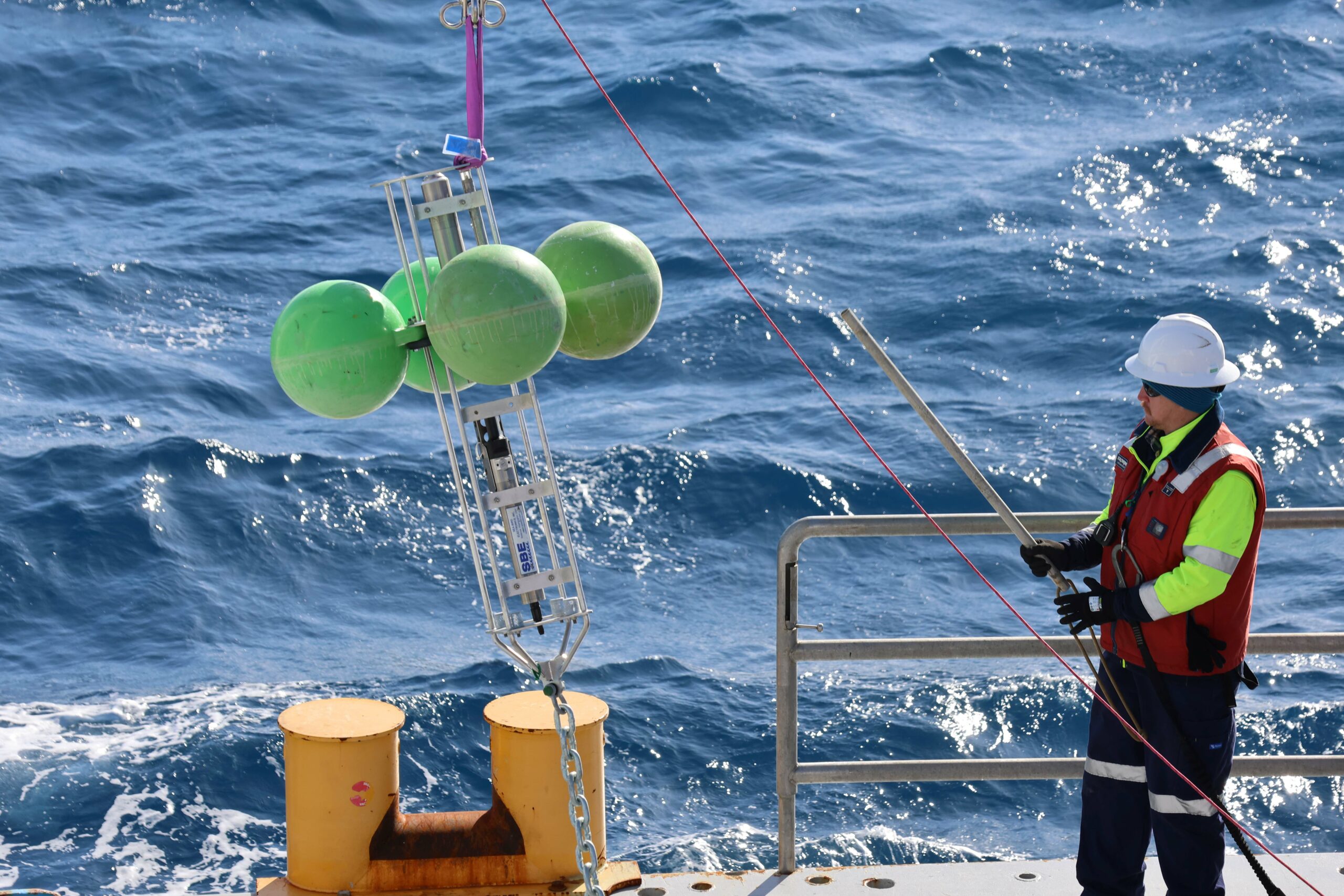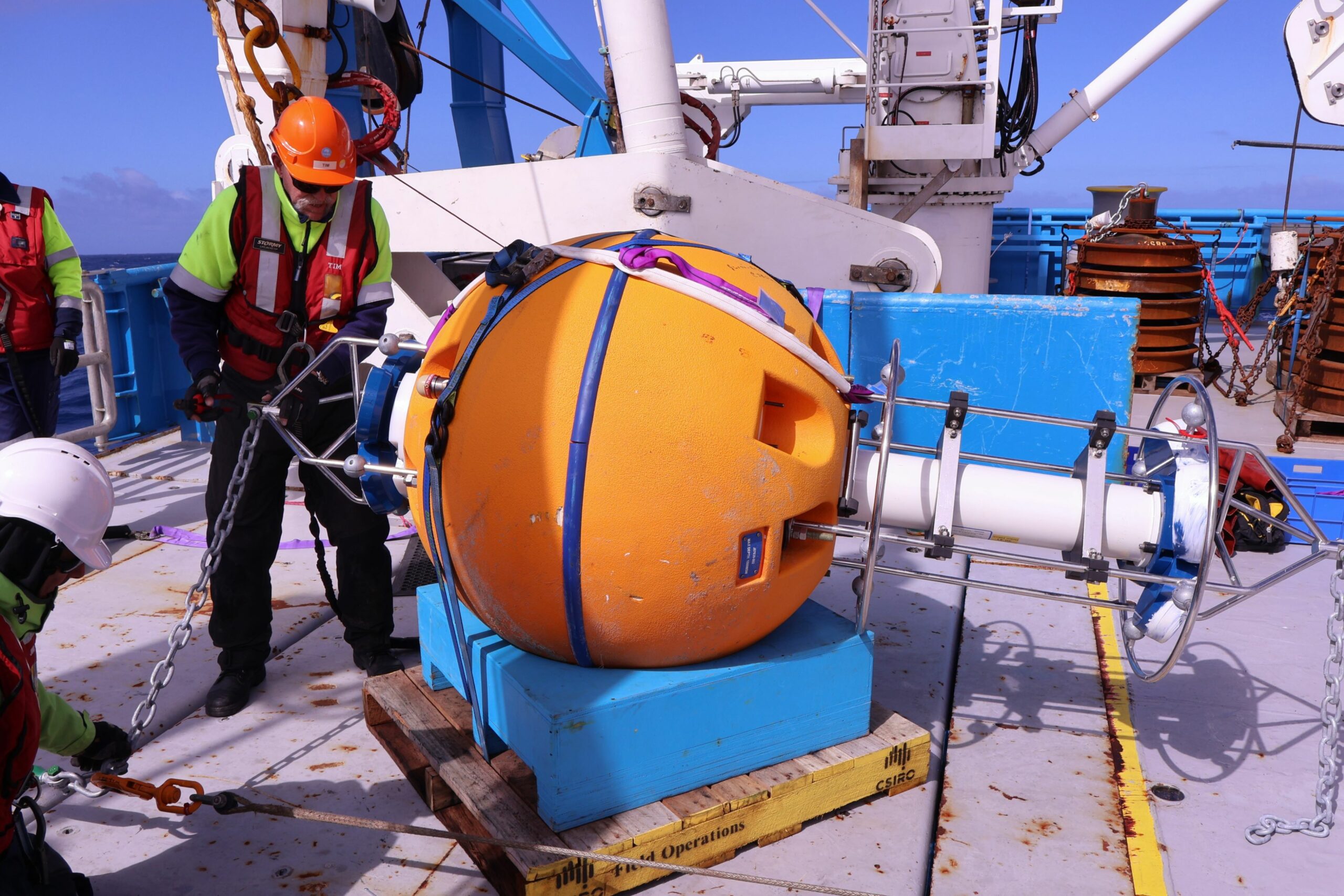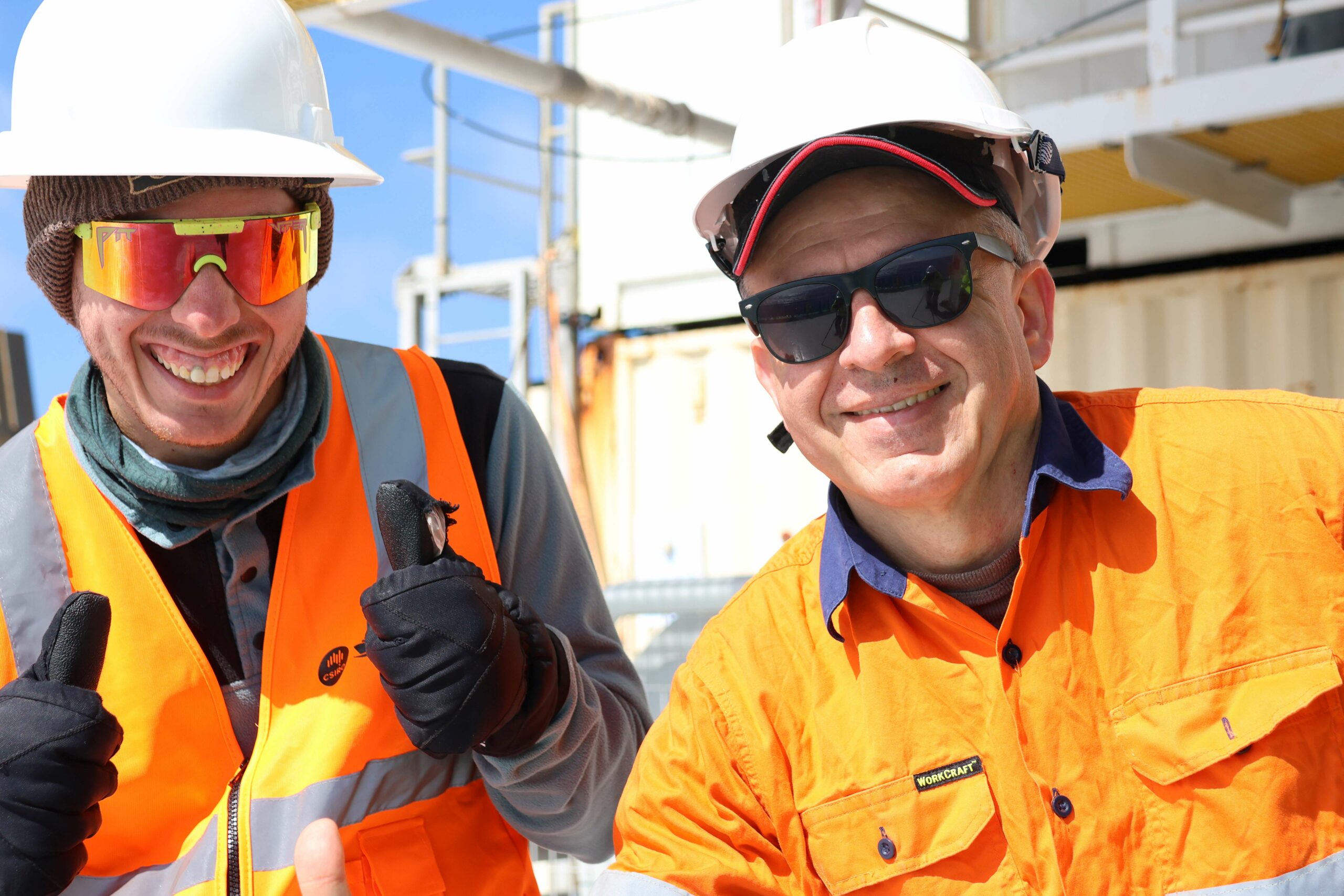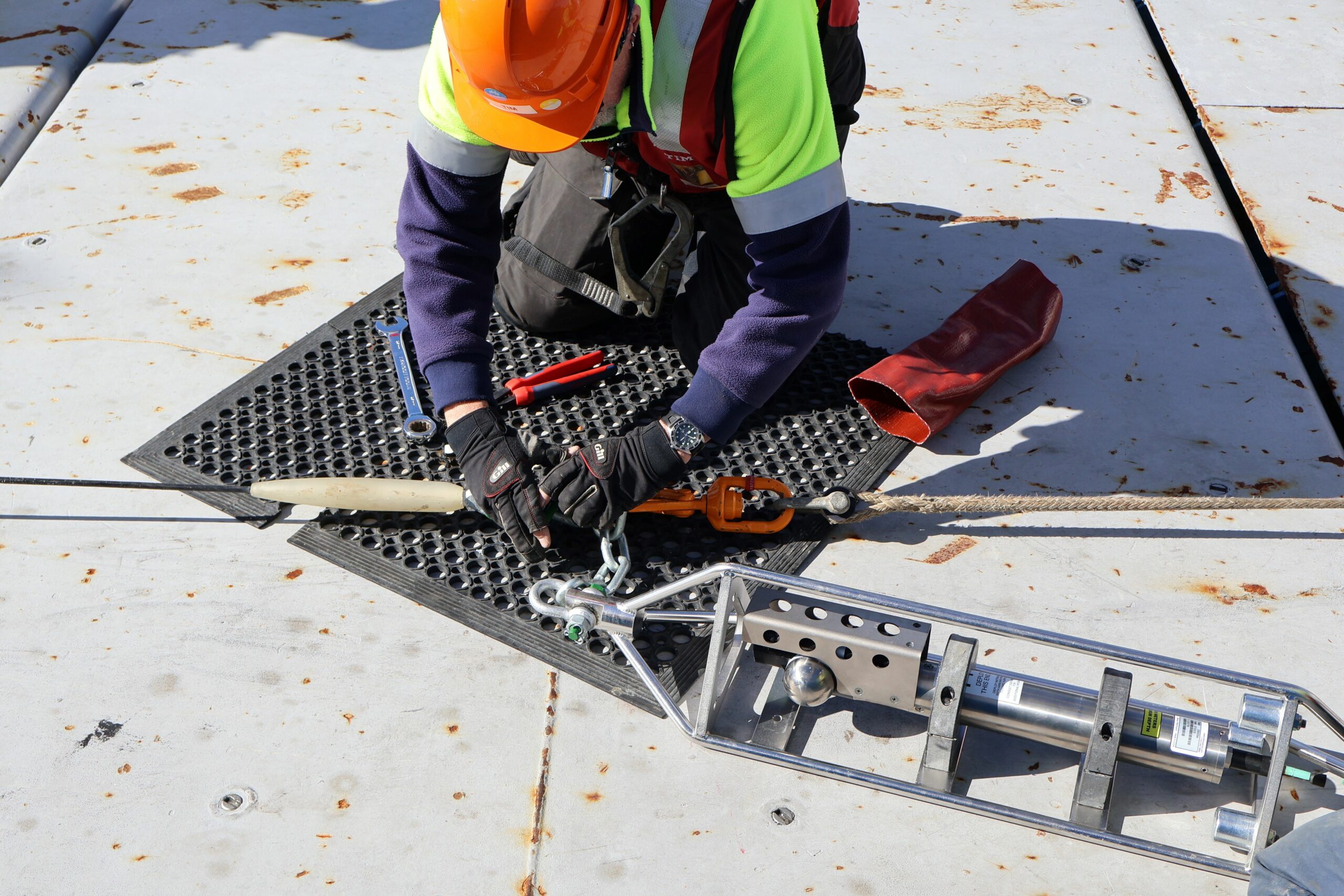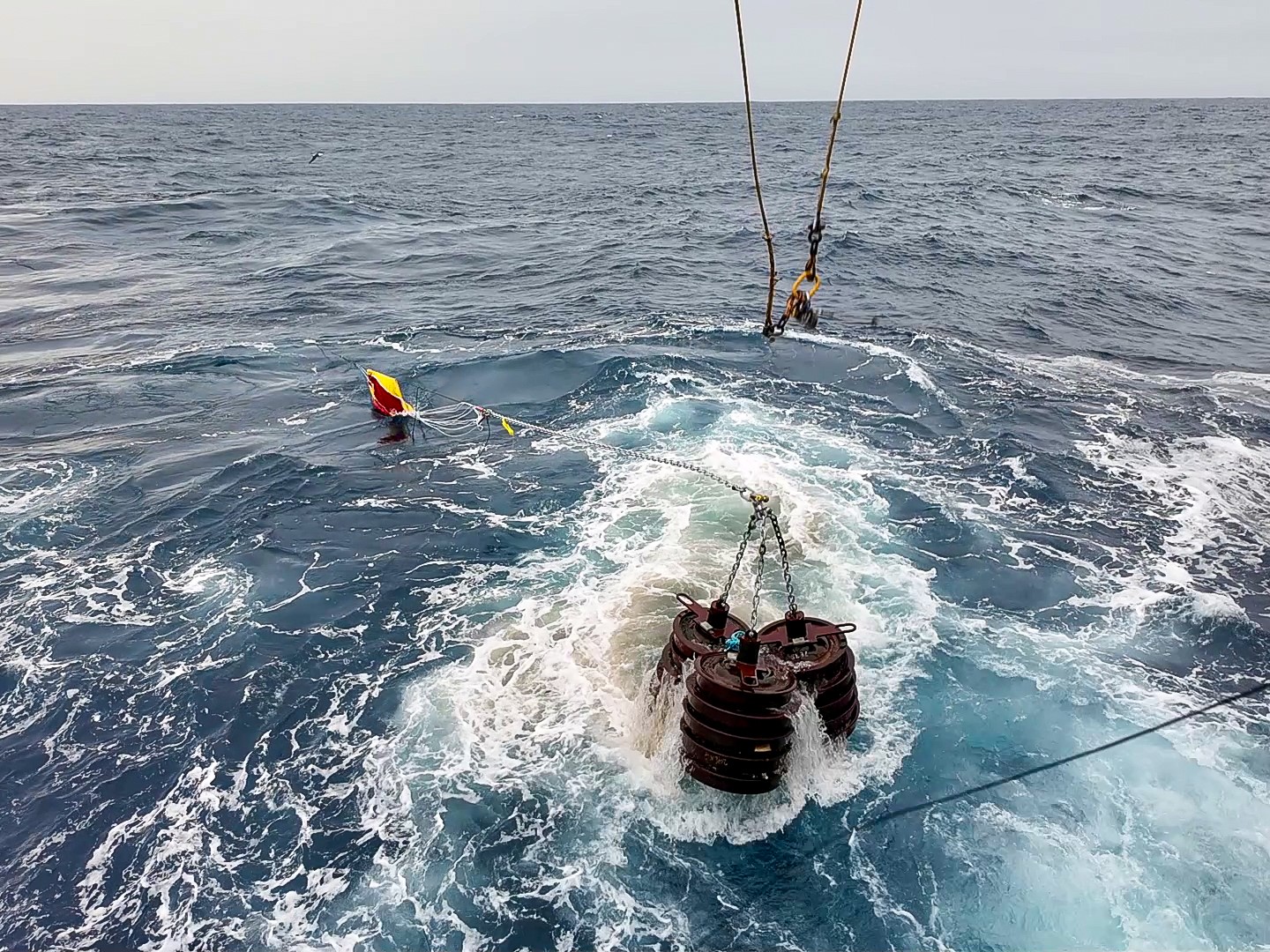How to build a tall mooring
Imagine you want to measure the wind, temperature, pressure and other features of the atmosphere at various levels simultaneously for more than a year, to provide a cross-section of the forces driving weather patterns. So you build a tower 3.5 kilometres high and festoon it with all manner of meteorological instruments from the ground to the top.
That’s what the FOCUS voyage has done, but in the ocean. We’ve deployed a ‘tall mooring’, a string of more than 50 oceanographic instruments along a 3.5 kilometre line anchored to the seafloor and supported by giant floats. Onto the line at regular intervals, we attached CTD instruments (measuring salinity, temperature and depth) and current velocity profilers (using sound waves to measure how fast currents are moving). Except we started at the top and finished with the anchor.
“It’s an awesome installation of science infrastructure 11 times the height of the Eiffel Tower,” said voyage co-chief scientist Dr Benoit Legresy of CSIRO and AAPP.
It took all day and ideal weather conditions to roll out from CSIRO research vessel (RV) Investigator, with expert teamwork between bridge and deck crew, and a steady stream of instruments carried out in the right order. Attached to the line in a carefully planned sequence are 15 current profilers and 27 CTDs, held up in the ‘underwater weather tower’ by six orange 300kg floats and 24 smaller glass floats (for high pressures deeper than 1200 metres).
Once all this was trailing behind the ship, a 4.5 tonne anchor was dropped from the stern. Its descent was slowed by a parachute to minimise damage to the mooring as it sank at the drop site, taking 40 minutes to land on the seafloor 3.6 kilometres below.
“We’ve planted this mooring in the middle of our survey area in the Antarctic Circumpolar Current, so we can correlate what is happening in the ocean beneath with what the satellite is ‘seeing’ on the surface as it orbits overhead,” Dr Legresy said.
The mooring – and all the data contained in the instruments – will be recovered by a future voyage in 18 months or so. When a signal triggers release units at the base, the floats will bring the mooring to the surface, and a beacon will guide the ship to its prize.
This research is supported by a grant of sea time on RV Investigator from the CSIRO Marine National Facility which is supported by the Australian Government’s National Collaborative Research Infrastructure Strategy (NCRIS).

